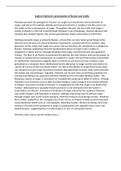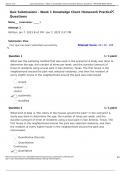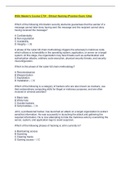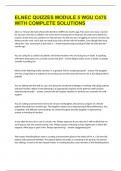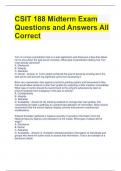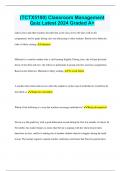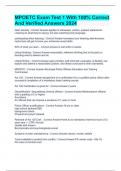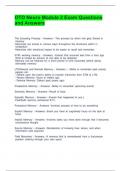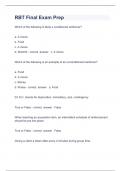Summary
Summary ICAEW ACA Corporate Reporting - Remuneration checklist
All you need to know regarding the Remuneration topic (4/7) within the Corporate Reporting Advanced Level exam. Easy to use checklists perfect for the open book exam. The hard work has already been done for you!
[Show more]





